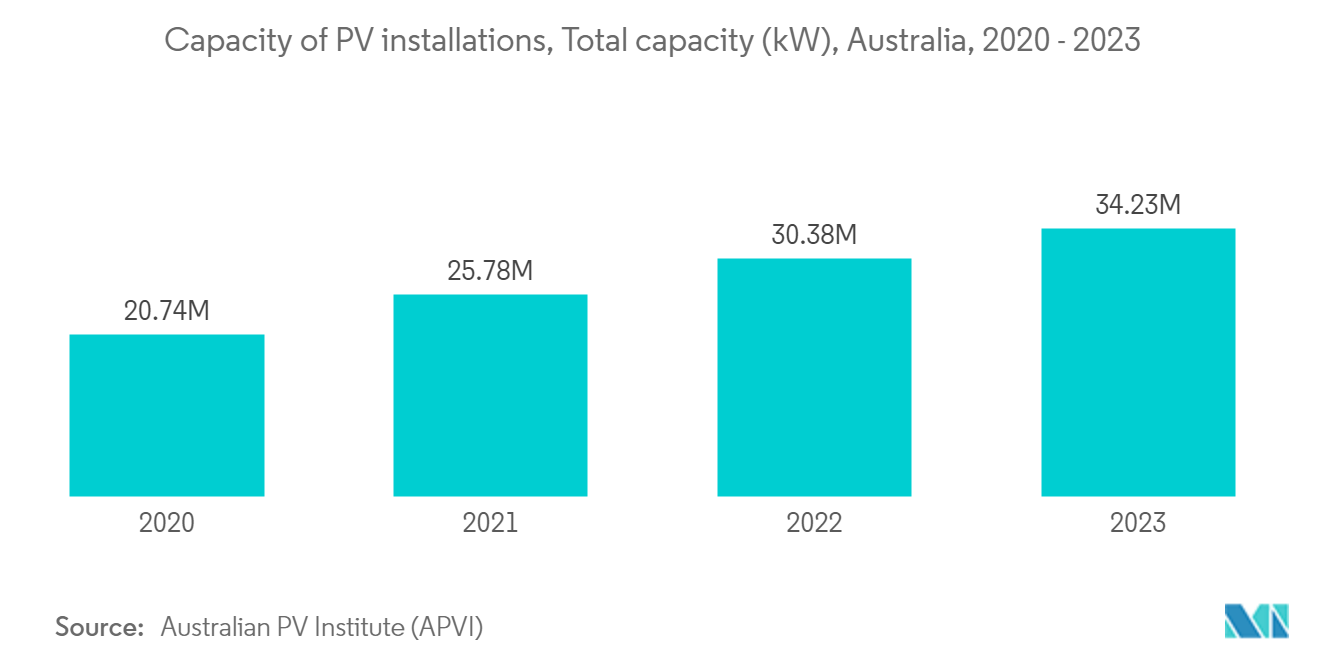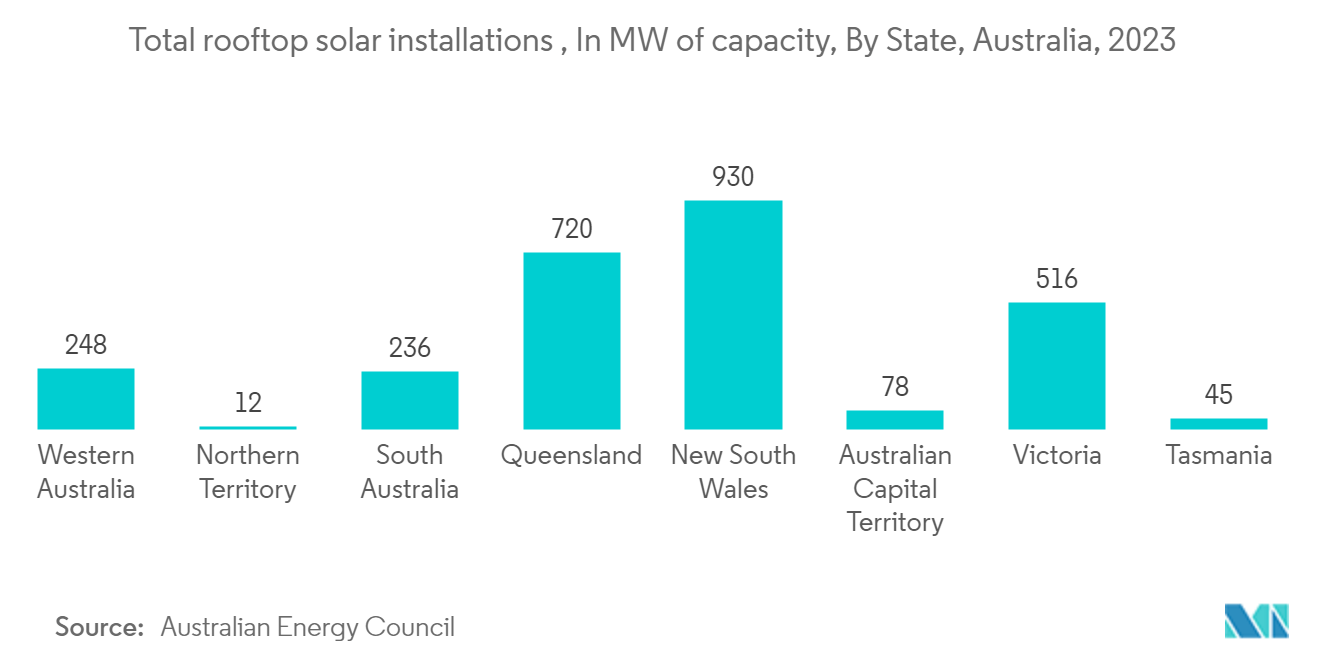Market Trends of Australia Switchgear Industry
High Voltage Switchgear to Hold Significant Market Share
- High-voltage switchgear is extremely popular in Australia. It comprises high-voltage components like circuit breakers and disconnectors. It is commonly used in city buildings, office spaces, offshore platforms, extensions, and roofs. High voltage switchgear is divided into two types, namely gas-insulated switchgear (GIS) and air-insulated switchgear (AIS). GIS is widely used in power transmission, railways, and integrating renewable energy-producing units into the grid.
- The demand for high-voltage switchgear is expected to be propelled by the country's potential to integrate renewable power generation units into the grid. For instance, according to the Australian Energy Market Operator (AEMO), the Australian grid could derive 75% of its electricity from renewables, mainly wind and solar, in the next five years.
- Furthermore, AEMO introduced a 30-year roadmap to ramp up the transition to renewables with investments in the National Energy Market (NEM) in its Integrated System Plan (ISP). The step change scenario predicts annual electricity consumption from the grid to double by 2050 as transport, cooking, heating, and industrial processes are electrified, and 60% of current coal generation is expected to exit by 2030.
- According to the Electricity (Network Safety) Regulations, Western Australia, an electricity network operator or electrical contractor who intends to design, construct, commission, operate, maintain, or decommission an electricity network must comply with the Australian Standard AS 62271 for high voltage AC switchgear and control gear. Furthermore, the Australian PV Institute (APVI) stated that as of December 2023, there were more than 3.69 million PV installations in Australia, with a combined capacity of more than 34.2 gigawatts.
- The major factors driving the growth in the market studied are the rising energy demand and the extension/replacement of old switchgear at sub-stations. Due to its space optimization, low maintenance, and protection against external elements, the demand for switchgear in Australia is expected to rise during the forecast period.

Adoption of Renewable Sources of Energy to Drive the Market
- The Australian government is implementing reforms to foster the security of supply, including a retailer reliability obligation, adjustments to system operation, and planning for market design post-2025 at higher levels of variable renewables. This is expected to propel the demand for switchgear during the forecast period.
- As per the Australian Energy Council, rooftop solar installations in Australia saw robust growth throughout 2023. The country added 2,785 MW of new rooftop solar capacity, pushing the cumulative total to 22,072 MW by December 2023. In terms of state-wise installations in 2023, New South Wales led with 930 MW, followed by Queensland at 720 MW, Victoria at 516 MW, Western Australia at 248 MW, South Australia at 236 MW, Tasmania at 45 MW, the Australian Capital Territory at 78 MW, and the Northern Territory at a modest 12 MW. Solar PV arrays produce a direct current (DC) output, which is then channeled into a PV inverter. Ensuring the presence of protective switchgear is paramount for the safe operation of any PV system.
- Furthermore, as per Rystad Energy, rooftop solar PV installations are expected to increase to a total capacity of 94.7 gigawatts (GW) in the next five years. This growth is in an upward trend for the rooftop solar market due to government regulations and policies, especially feed-in tariffs (FiTs) that guarantee an above-market price for producers. Such development is expected to boost the demand for switchgear in the market during the forecast period.
- The federal government released its long-awaited Australian Long-Term Emissions Reduction Plan, designed to achieve net zero emissions by 2050. The government's initiatives to achieve carbon neutrality may further boost the demand for switchgear in the market studied.


